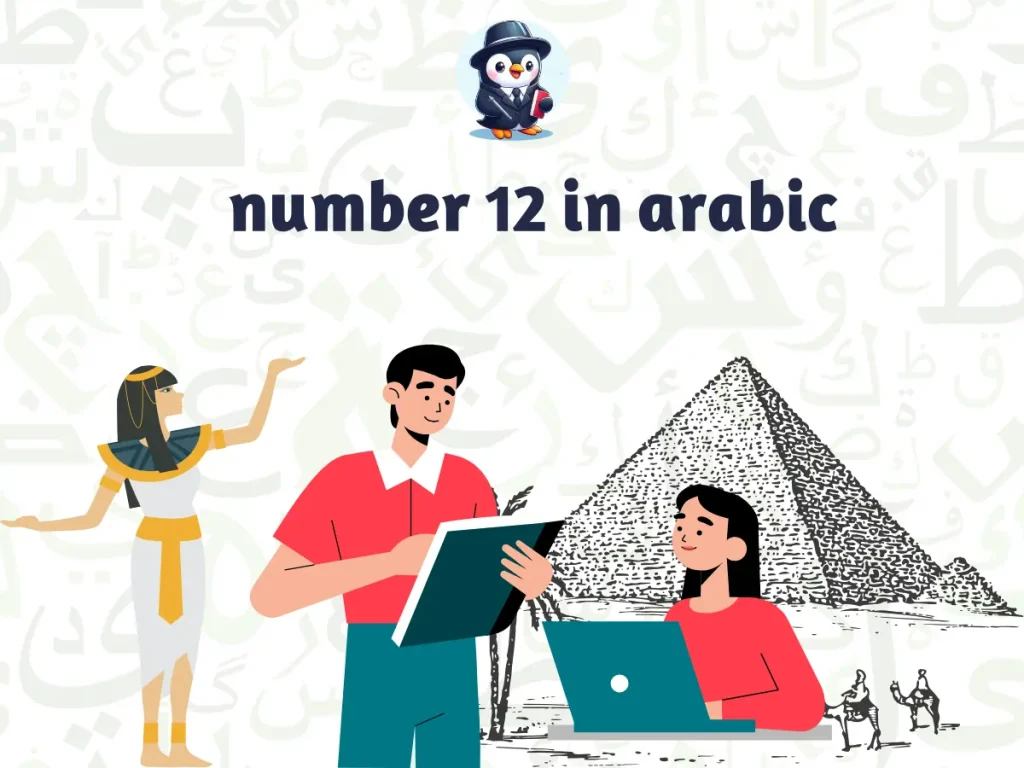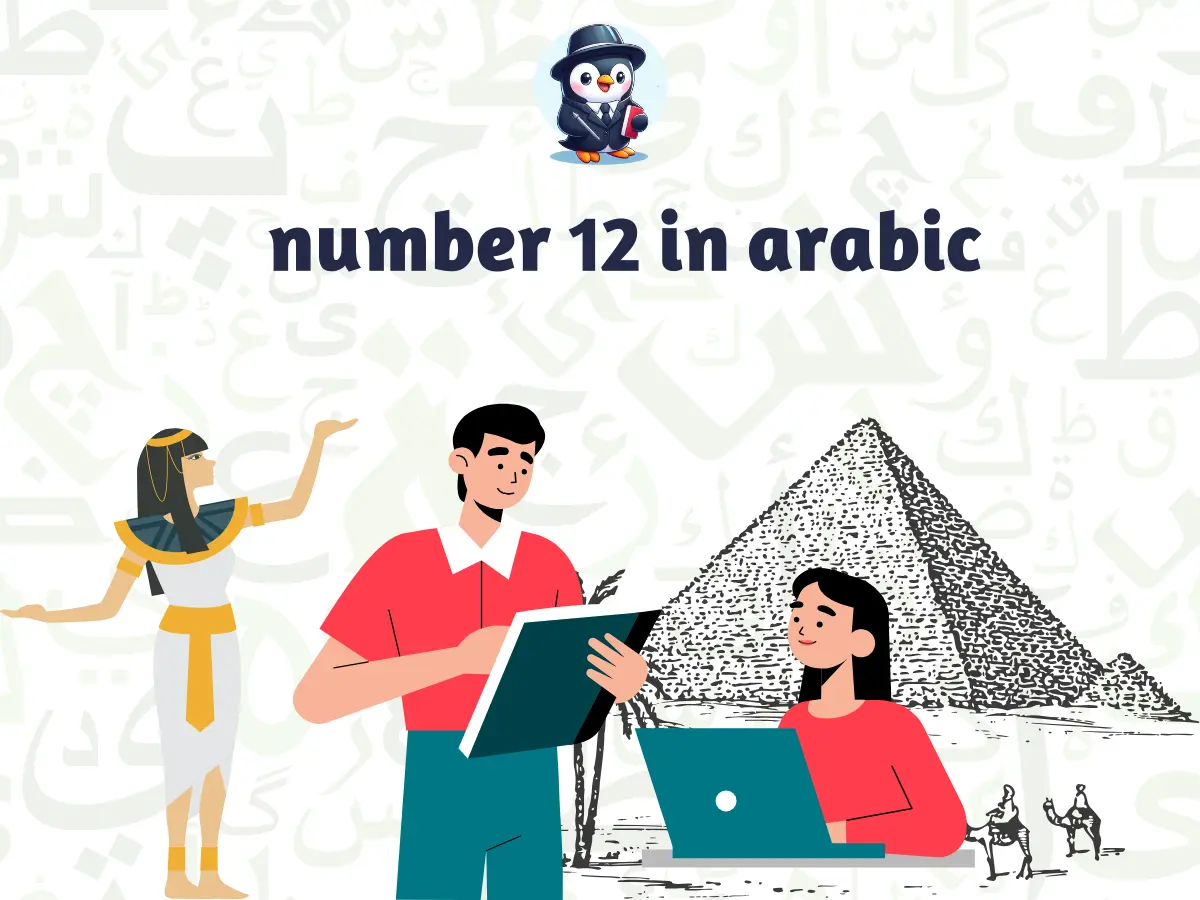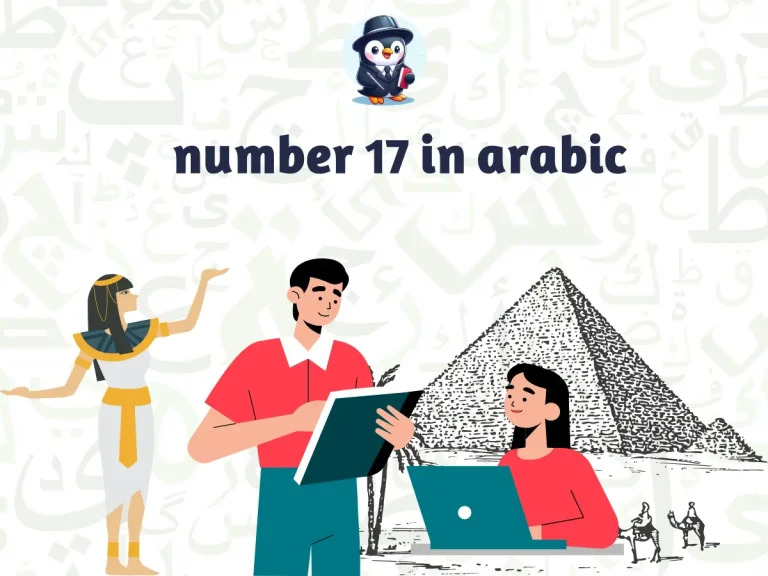number 12 in arabic pronunciation & writing
The number 12 in arabic, “Ithna ‘Ashar” (اثنا عشر) in Arabic, transcends mere counting. It holds a unique position in the language, intertwined with culture, history, and everyday communication.
To learn more about the rest of the numbers from 1 to 100, you can visit this link: Arabic numbers 1 to 100
Here’s a glimpse into the importance and diverse uses of twelve in Arabic:
number 12 in arabic: The Foundation for Higher Numbers
Unlike English and many other languages, Arabic employs a distinct system for numbers eleven to nineteen.
“Ithna ‘Ashar” literally translates to “two and ten” (اثنان وعشرة (ithnān wa-ʿashara)).
This pattern continues for the following numbers, making twelve crucial for understanding the system. Grasping “Ithna ‘Ashar” unlocks the key to navigating this specific numbering scheme.
number 12 in arabic: Cultural and Historical Significance
Twelve holds symbolic value in various aspects of Arab culture. For example, the twelve months of the Islamic calendar mark religious observances and historical events.
Additionally, some architectural features, like the twelve decorative minarets on a mosque, might hold symbolic meaning.
Understanding “Ithna ‘Ashar” allows you to appreciate these cultural references and delve deeper into the rich tapestry of Arab traditions.
number 12 in arabic: Mastering Everyday Interactions
From navigating public transportation (“al-autobus yaʾati baʿd ithna ‘ashara daqiqah” (الأوتوبيس يأتي بعد اثنتي عشر دقيقة) – The bus comes in twelve minutes)
to ordering food (“urid ithna ‘ashara samosa” (أريد اثنا عشر سمبوسة) – I want twelve samosas),
using “Ithna ‘Ashar” is essential for clear communication in everyday situations.
number 12 in arabic: Deciphering the Past
Dates on historical buildings and documents are often written in numerals. Knowing “Ithna ‘Ashar” allows you to interpret these inscriptions, offering a window into the past.
For example, an inscription mentioning the construction of a monument in “sanat ithnatayn wa arbaʿeen” (سنة اثنتين وأربعين) refers to the year 42 in the Hijri calendar.
By appreciating the importance and diverse uses of “Ithna ‘Ashar,” one gains a deeper understanding of the Arabic language and its connection to the cultural and historical context it serves.
So, the next time you encounter “Ithna ‘Ashar,” remember – it’s more than just a number; it’s a gateway to a richer understanding of the Arabic world.
Arabic Numerals, Origins, and Comparisons
While we readily use Arabic numerals today, their story is one of adoption and adaptation.
Here’s a breakdown of their development, a comparison with other systems, and how to write and pronounce the number twelve in Arabic.
The Birth of a System: Not Quite Arabic
The symbols we know as “Arabic numerals” actually originated in India around the 3rd century BCE.
These Brahmi numerals evolved over time, and by the 7th century AD, a refined system using symbols for digits one through nine and a dot for zero emerged.
The Arabic Connection: Embracing Innovation
Arab mathematicians and scholars, like Al-Khwarizmi, played a pivotal role in popularizing these numerals.
They translated Indian mathematical texts, incorporating the numeral system and introducing the concept of zero into their own mathematical works.
This system offered advantages over Roman numerals, making calculations easier and more efficient.
A Global Journey: From East to West
Through trade and scholarly exchange, the numerals spread westward. European mathematicians encountered them through Arabic texts and translations, recognizing their practicality.
By the 15th century, Arabic numerals had gained widespread acceptance in Europe, gradually replacing the cumbersome Roman numeral system.
A Look at Other Systems: A World of Counting
- Roman Numerals: This system, based on letters (I, V, X, L, C, D, M), was prevalent in Europe for centuries. However, its complexity made calculations challenging.
- Chinese Numerals: These involve unique symbols for each number, one to ten, and then combinations for higher numbers.
- Mayan Numerals: This system, used by the Mayan civilization, employed dots and bars to represent numbers, along with a place-value system.
number 12 in arabic: Writing and Pronouncing
The number 12 in arabic is Ithna ‘Ashar (اثنا عشر).

Writing number 12 in arabic
- The first part “Ithna” (اثنا) is written with the letters “alif” (ا), “tha” (ث), “nun” (ن), and “alif” (ا) again.
- The second part “‘Ashar” (عشر) uses the letters “ʿayn” (ع), “shiin” (ش), and “ra” (ر).
| Pronunciation | Arabic | English |
|---|---|---|
| ithna ‘ashara | اثنا عشر | twelve |
| yabda’a al-fasl al-diraasi fi ithna ‘ashara min september | يبدأ الفصل الدراسي في اثنا عشر من سبتمبر | The semester starts on the twelfth of September. |
Pronunciation number 12 in arabic
- “Ithna” sounds like “ith” (similar to “with”) followed by “na” (like “nah”).
- Refer to the previous explanation for pronouncing “‘Ashar” (عشر) used in numbers eleven through nineteen. It involves a guttural sound for the “ʿayn” (ع).
| Pronunciation | Arabic | English |
|---|---|---|
| ithna ‘ashara | اثنا عشر | twelve |
| ishtarat ithna ‘ashara kitaban jadidan | اشتريت اثنا عشر كتابًا جديدًا | I bought twelve new books. |
number 12 in arabic: In Conclusion
While not truly Arabic in origin, Arabic numerals have become the global standard due to their efficiency.
Understanding their development and how they compare to other systems offers a fascinating glimpse into the history of mathematics and cultural exchange.
Furthermore, knowing how to write and pronounce “Ithna ‘Ashar” equips you to navigate the world of Arabic numbers with confidence.
Nuances in Pronunciation: Exploring “Ithna ‘Ashar” (Twelve) Across Arabic Dialects
While the core meaning of “Ithna ‘Ashar” (اثنا عشر) remains “twelve” across Arabic dialects, there might be slight variations in pronunciation depending on the region. Here’s a breakdown of some potential differences:
Standard Arabic (MSA)
- This is the formal Arabic used in education, media, and official documents.
- Pronunciation of “Ithna ‘Ashar” follows the classical rules, with a clear distinction between the “th” sound in “Ithna” and the guttural “ʿayn” sound in “‘Ashar.”
Egyptian Arabic
- The most widely spoken dialect, used in Egypt and parts of North Africa.
- The emphasis might shift slightly. “Ithna” might sound a bit shorter with a less pronounced “th” sound.
- The “ʿayn” sound in “‘Ashar” might be slightly softened.
Levantine Arabic
- Spoken in the eastern Mediterranean region, including Syria, Lebanon, Jordan, and Palestine.
- Similar to Egyptian Arabic, the “th” sound in “Ithna” might be softened.
- The “ʿayn” sound in “‘Ashar” might be less prominent.
Gulf Arabic
- Spoken in the Arabian Peninsula countries like Saudi Arabia, Kuwait, and Qatar.
- The “ʿayn” sound in “‘Ashar” might be the most noticeable difference. It might be pronounced with a lighter emphasis compared to Standard Arabic.
Magrebi Arabic
- Spoken in North Africa, including Morocco, Algeria, Tunisia, and Libya.
- Possible variations in pronunciation of both “Ithna” and “‘Ashar” depending on the specific sub-dialect.
- The “th” sound in “Ithna” might be closer to a “t” sound.
Remember: These are just a few examples, and the specific pronunciation variations depend on the individual dialect and speaker.
Beyond Pronunciation
- Word Order: In some dialects, like Iraqi Arabic, the order might be reversed, with “‘Ashar Ithna” (عشر اثنا) used for twelve. However, this is less common.
Understanding these dialectal variations can enhance your comprehension of spoken Arabic and demonstrate your cultural sensitivity.
However, focusing on mastering the standard Arabic pronunciation of “Ithna ‘Ashar” is a good starting point for clear communication.
By embracing the rich tapestry of Arabic dialects and appreciating the subtle differences in pronouncing “Ithna ‘Ashar,” you’ll be well on your way to navigating the diverse world of Arabic communication.







